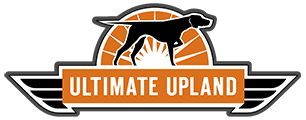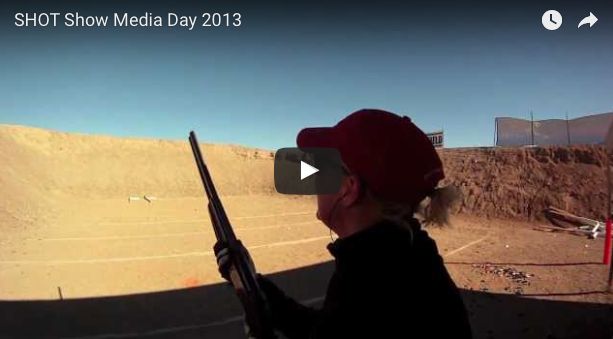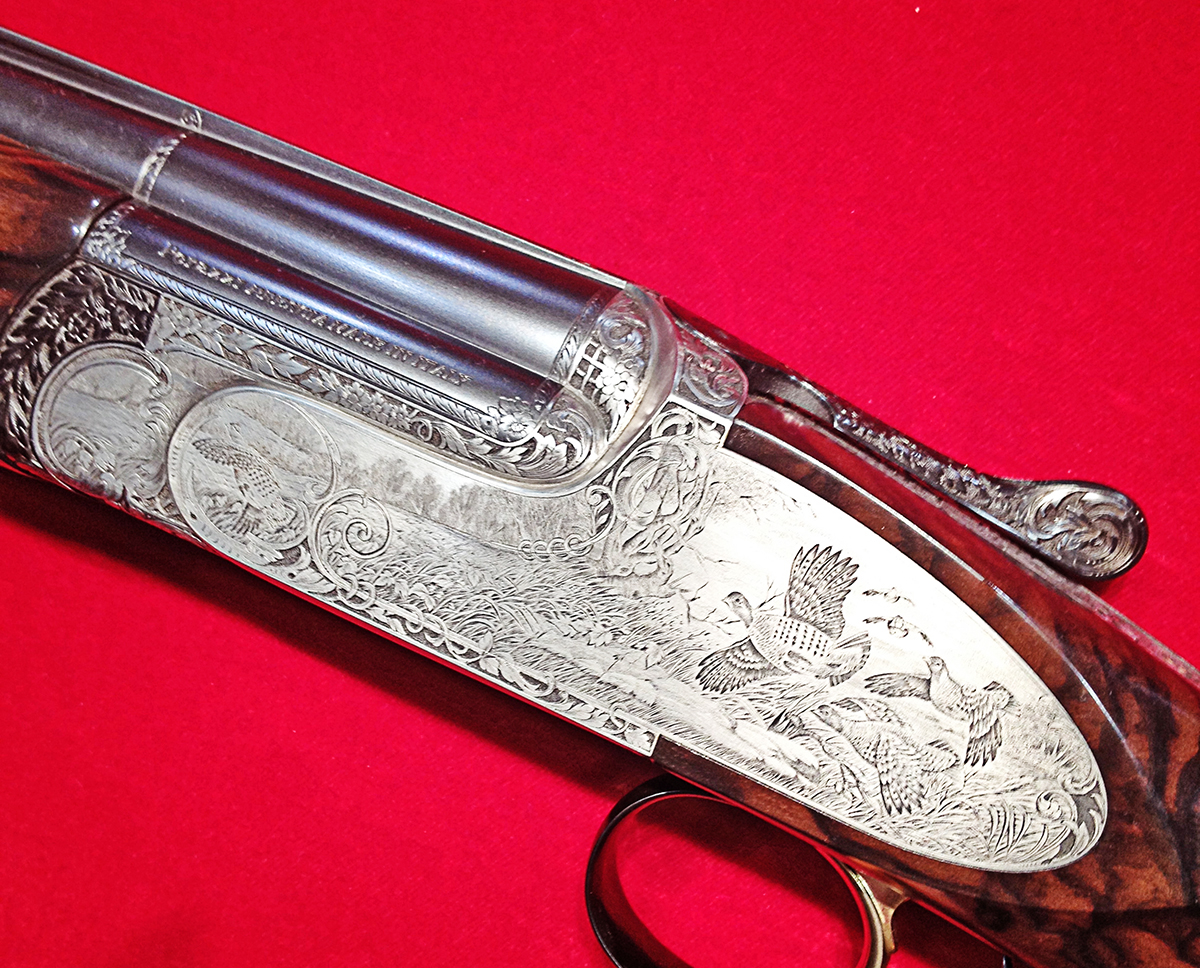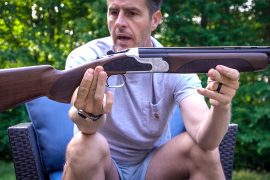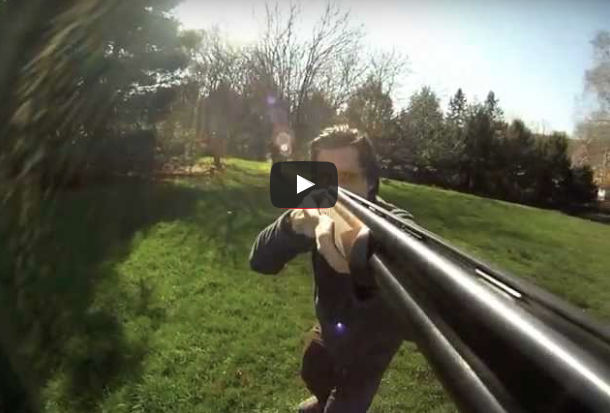O/U Shotguns
The O/U came about in the early twentieth century. Since then it has become the weapon of choice in almost all competitive shooting disciplines and is a favorite for many an upland pursuer. The appeal of these guns is largely due to reliability — pull the trigger twice and the guns goes bang twice (we won’t even begin to wade into the single vs. dual trigger arena, head to the Lodge to discuss that).
The stacked barrels create a a more narrow sighting plane when compared to the side-by-side, which nets more precise long shots.
One of the largest hunting advantages of the over-under is the ability to have both a ‘near and far’ choke — two separate chokes allow for different shot spread and effective distance — first shot for up close and second shot for longer yardage.
As with other break action weapons, safety is always touted as one of the biggest benefits. An opened action is a visible sign to guides and other hunters alike that the weapon is secured. And the ability to easily look through both barrels when open allow hunters to recognize any barrel obstructions or fouling. This also makes the barrels super easy to clean, both in the field or on the workbench.
Besides the need for a PHD to fix the O/U in the event of a rare malfunction, the only other negative often espoused is sticker price.
Autoloader
Fast, smooth cycling with oodles of shots, pretty much sums it up.
There are two breeds of autoloader, the inertia driven or the gas operated. Inertia use rearward movement of the barrel or internal parts after a shot in order to cycle the action. Gas operated cycle with pressure collected from shell discharge.
Older automatics were often considered heavy and unwieldy, although modern design and materials have lightened the load for a lot of these weapons. Likely the biggest benefit of the auto is the lessened recoil and soft shooting nature combined with multiple fast repetititve shooting.
The downside to the smooth shooting is the relative high maintenance. Lots of moving parts means lots of opportunity for moving parts to break. Autoloaders also tend to get dirty faster, and when sufficiently fouled there will be no fuego.
Newer models have become more reliable, and many include the added bonus of stock adjustment shims allowing the hunter to tweak the gun to his frame and liking.
Pump Shotguns
Ol’ Faithful; the pump has earned the reputation as the workhorse of American shotgun hunting. It is easily the best selling and most frequently fielded gun in the United States, certainly due in part to a comparitively modest price. The other likely factor contributing to popularity of the pump is that so many youngsters are started on this economical option and just can’t seem to shake the affinity or fond memories that keep them hooked for life.
Sturdy construction and reliability are the other standards which make the pump gun required equipment for so many hunters. Regardless how many shells cycled, or if it is drug through the dirt the pump gun is still gonna go bang.
Relative ease of assembly/disassembly also tends to pay off in the field with simpler cleaning and repairs when needed — this may be a bit less true with older models.
Shooting proficiency often depends on comfort level and experience with a particular weapon, but one of the few perceived disadvantages of using a pump is having to reaquire the target after cycling a round. But let’s be honst, there is just something cool and primeval about the sound of a smooth pump action cycling that makes one feel truly at home shouldering it.
Single Shot Shotguns
Quite possibly the rarest gun in the upland field. In a day where more more more is considered better, this old standard has been left behind. So much for the idea of one shot, one kill.
There may be no better weapon with which to learn shotgunning; absolute beatiful simplicity.
As with other break action weapons, safety is the biggest benefit. An opened action is a visible sign to instructor, guides and other hunters alike that the weapon is secured. And the ability to easily look through the barrel when open allow hunters to recognize any barrel obstructions or fouling. This also makes the barrel super easy to clean, both in the field or on the workbench.
Lightweight, easy to clean, easy to use but for most the lack of a follow up shot does not outweigh the benefits of the meager single-barrel.
SxS Shotguns
The gun from the glory days of hunting. The sepia images of tweed clad forefathers wielding the twin-hammered double guns and multiple brace of birds make the side-by-side legendary.
The barrel configuartion hails from those days of muzzleloaders and hammers, though the benefits of the more modern designs are considered to be a broader horizontal sight picture which allows one to visually aquire birds more easily. Also, the barrels often feel as if they sit lower in the forehand which make mounting and pointing the gun seem a more natural fit.
The downside rap to the SxS is a perceived lack of accuracy at longer ranges attributed to the same broad horizontal site pictures — classic case of dammed if you do, dammed if you don’t.
As with other break action weapons, safety is always touted as one of the biggest benefits. An opened action is a visible sign to guides and other hunters alike that the weapon is secured. And the ability to easily look through both barrels when open allow hunters to recognize any barrel obstructions or fouling. This also makes the barrels super easy to clean, both in the field or on the workbench.
There certainly are less costly hunting options, but to be part of the tradition enveloping the side-by-side may justify the expense.
